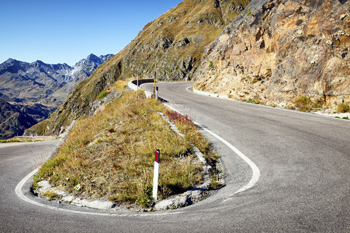Our DMV-approved online drivers education course is designed just for teens. Study at your own pace, pass the final test, and get your certificate.
Sign Up Now – Only $19.90 Learn More About Teen Drivers Ed
Driving in rural (country) roads is very different from driving in the city.
Rural roads are not designed in an efficient way like the urban roads. Urban roads and highways usually have much better architecture, which provides a driving environment with fewer obstacles and higher-speed driving.
Here are some challenges you may deal with when driving on rural roads:
In addition to the above obstacles and challenges, if there is an accident, help or an ambulance is far away, so you need to be extra careful on the rural roads.
If you are driving to a rural area, take the following safety precautions:
1. Inspect your vehicle and make sure it is safe to drive.
Inspect your vehicle to make sure it is in a safe condition or take it to a mechanic for a safety inspection before traveling on a rural or mountain road.
Rural or mountain roads do not have good traction, so you need to make sure that your tires are safe for rural or mountain driving. Always check your tires' pressure, tread depth and condition before driving on a rural or mountain road.
2. Carry supplies in case you get stranded on a remote road.
If you are driving to a remote rural area, always carry water, food (dried food is better in case of an emergency, as it will last longer), flashlights, blankets, flares, First Aid kit, jumper cable, and other emergency supplies in case you get stranded or need help.
3. Make sure you don't get lost.
One of the most common problems on rural roads is the lack of street signs and if you do not have GPS navigation or there is no cellular connection, you may get lost on a rural road and end up on a difficult or dangerous road.
Carry GPS and a map of the area and be sure of where you are going before driving too far in a remote area.
4. Stay within the speed limit or slower.
Always stay within the speed limit or slower and, if there are other circumstances such as weather, road conditions or driving at night, you will need to reduce your speed considerably to a safe speed.
5. Be careful if there is a bad weather condition.
Rain, snow, ice, fog or night-driving on mountain roads or rural roads can be very dangerous.
Weather condition can quickly change mountain roads to dangerous territory. Avoid driving on rural, country or mountain roads when weather conditions are poor, especially at night.
If your visibility is too low to drive safely, try to exit to a safe place to stay or, if there is no exit for many miles, turn on your hazard lights and pull over to a safe spot (as far right to the road as possible), keep your seatbelt on, and do not drive until weather conditions improve.
6. Be aware of blind curves or dips.
When approaching a blind curve or dip in a narrow road, slow down and move as far to the right as possible to avoid any collision with upcoming traffic.
7. Be aware of one-lane bridges.
A bridge in a rural area may only have one lane. If you approach a one-lane bridge, slow down. If an approaching driver is closer to the bridge than you are, yield to the other driver. If you're not sure that you can safely pass the bridge, wait and yield to the other driver. Driving safely always means being courteous and allowing the other vehicle to proceed.